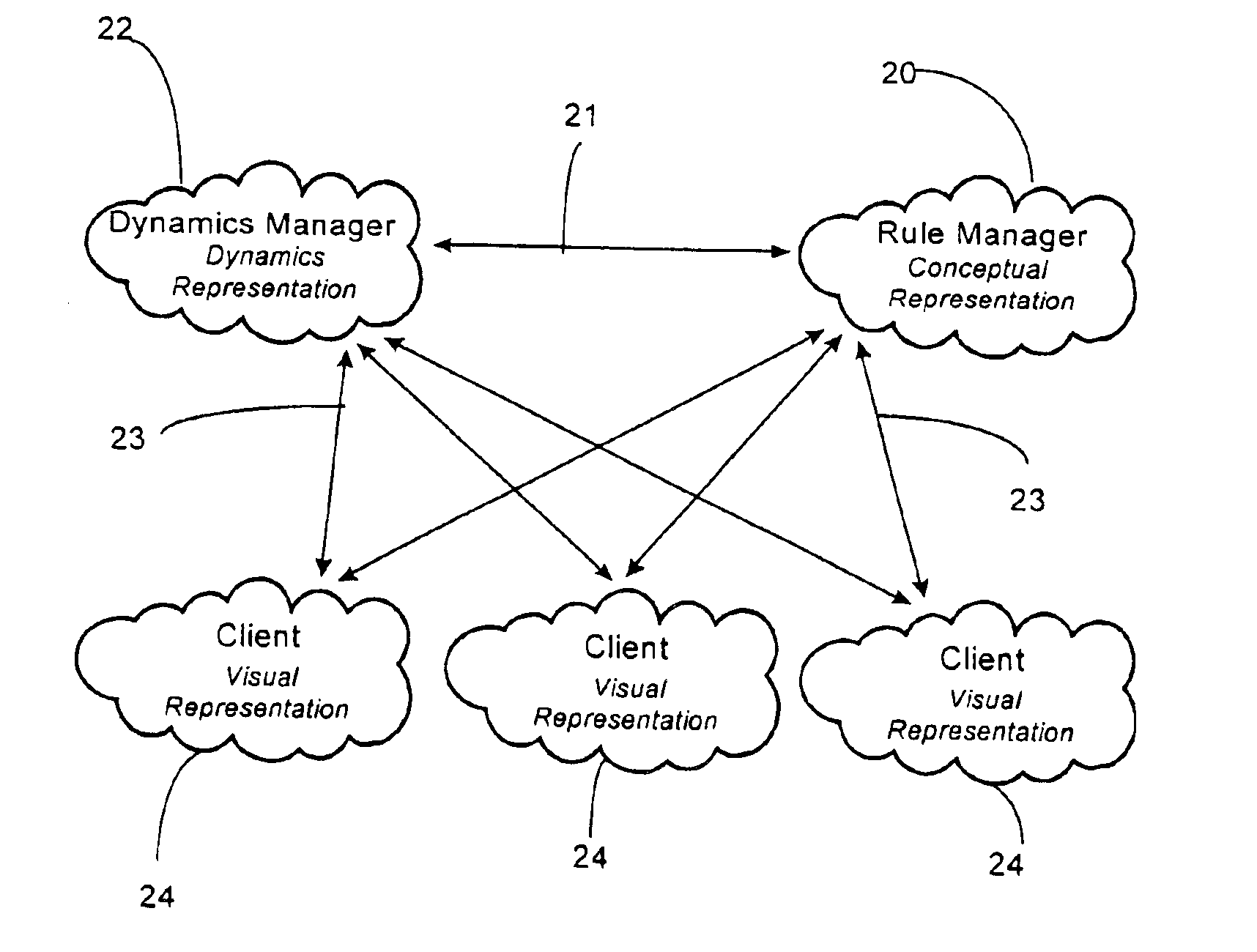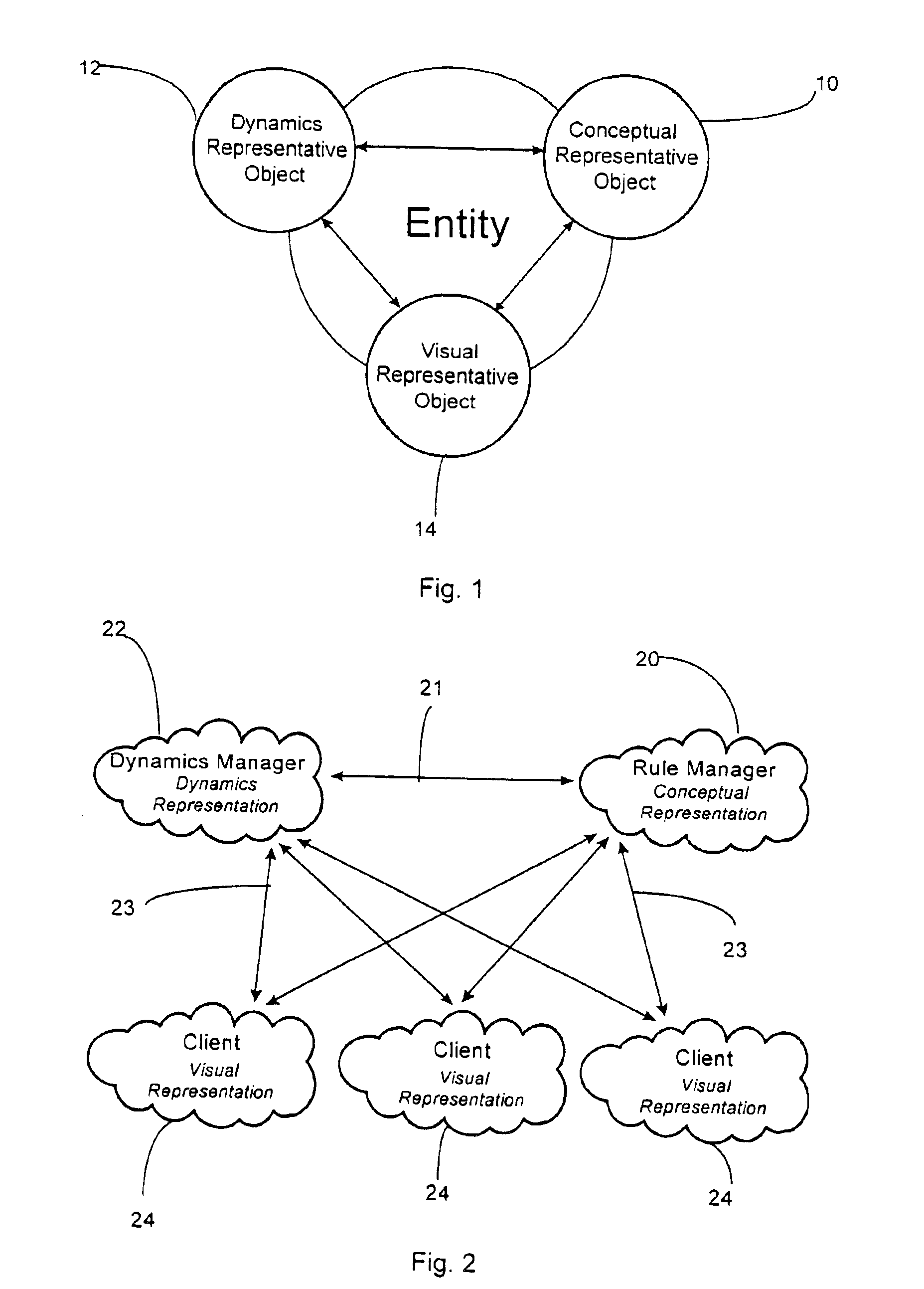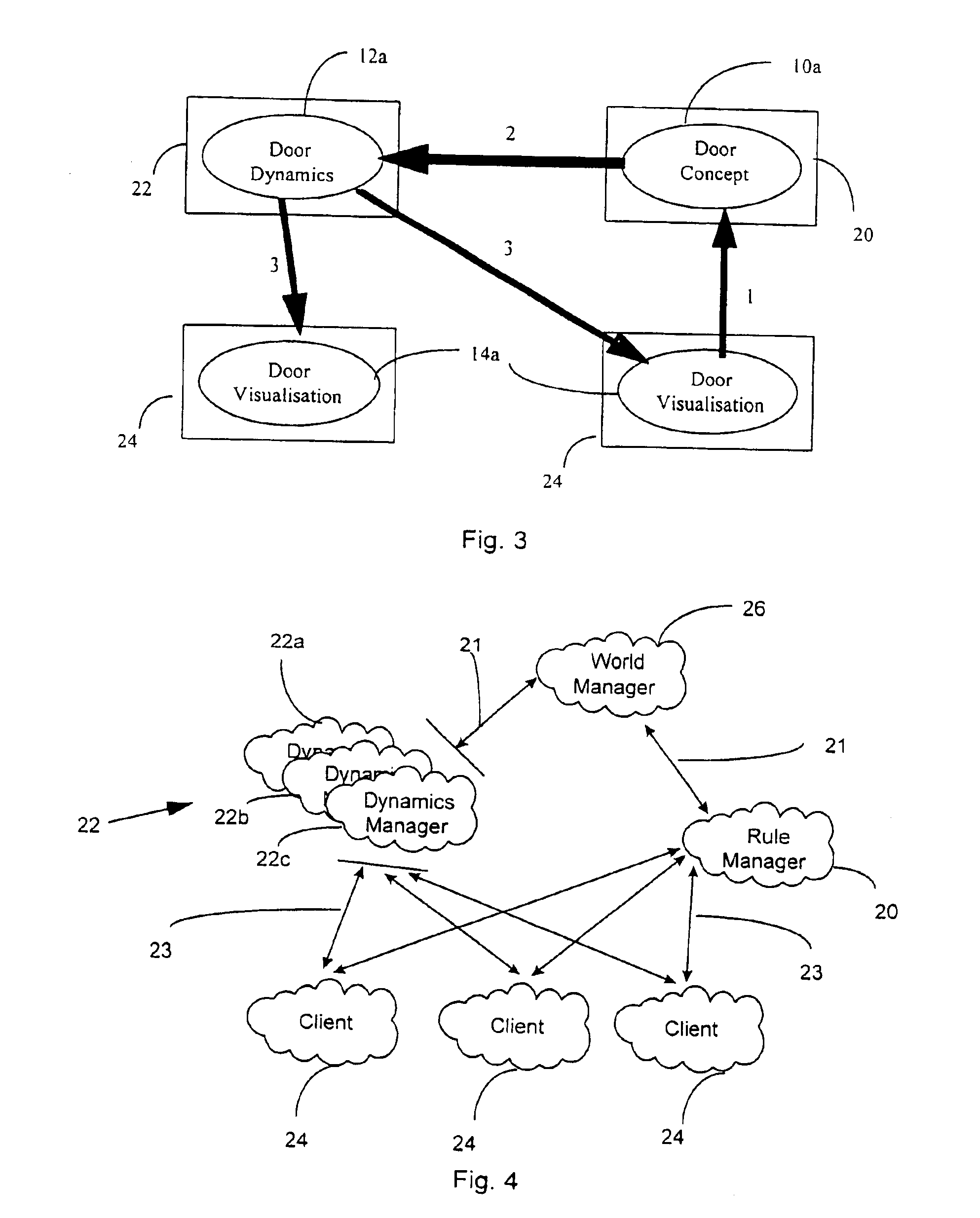Distributed virtual environment
a virtual environment and distribution technology, applied in the field of distributed virtual environments, can solve the problems of lack of scaleability, difficulty in maintaining a common shared view amongst all clients, and difficulty for designers to control what and whom players, so as to ensure the integrity and consistency of the apparatus, and reduce the requirement of upstream traffic
- Summary
- Abstract
- Description
- Claims
- Application Information
AI Technical Summary
Benefits of technology
Problems solved by technology
Method used
Image
Examples
second embodiment
[0083]FIG. 4 shows a preferred second embodiment of the invention based on this approach.
[0084]At the server end a Rule Manager (RM) 20 is provided as per the embodiment of FIG. 1. Several Dynamic Managers (OMs) 22a, 22b, 22c are provided along with a so called World Manager (WM) 26. Whilst the modelling of the dynamics of the environment is distributed, this is invisible to the conceptual model of the environment. The World Manager 26 provides a routing layer which allows the Rule Manager 20 to send messages directly to the Dynamic Manager 22 without having to track the location of the dynamic representative objects in the VE.
[0085]Appropriate communication between RM, WM and DMs is provided by means of respective network connections 21 between the RM 20 and WM 26, and between the WM 26 and each DM 22.
[0086]A further network connection 23 allows communication with one or more clients 24, each of which stores a Visual Representative Object.
[0087]Whilst multiple DMs 22a, 22b, 22c are...
case 3
[0147 is handled in a different way, and relies on allowing running Zone Managers to request one of their neighbouring zones be started. A Zone Manager, on detecting that a dynamic representative object needs to move into a currently closed zone, sends the request to the World Manager. The World Manager performs the creation process and the original Zone Manager will receive a connection from the new Zone Manager as it starts.
[0148]The start-up process for a Zone Manager 28 is as follows:[0149]Establish network connection from World Manager 26 to a zone manager 28.[0150]Receive allocated zone identity from World Manager, and extract current state of zone from the persistent object store 29.[0151]Create all dynamic representative objects within allocated zone from extracted state description.[0152]Receive identity of neighbouring zones, and, for those neighbours currently started, receive an address suitable to establish a network connection.[0153]For all neighbouring zones not start...
PUM
 Login to View More
Login to View More Abstract
Description
Claims
Application Information
 Login to View More
Login to View More - R&D
- Intellectual Property
- Life Sciences
- Materials
- Tech Scout
- Unparalleled Data Quality
- Higher Quality Content
- 60% Fewer Hallucinations
Browse by: Latest US Patents, China's latest patents, Technical Efficacy Thesaurus, Application Domain, Technology Topic, Popular Technical Reports.
© 2025 PatSnap. All rights reserved.Legal|Privacy policy|Modern Slavery Act Transparency Statement|Sitemap|About US| Contact US: help@patsnap.com



